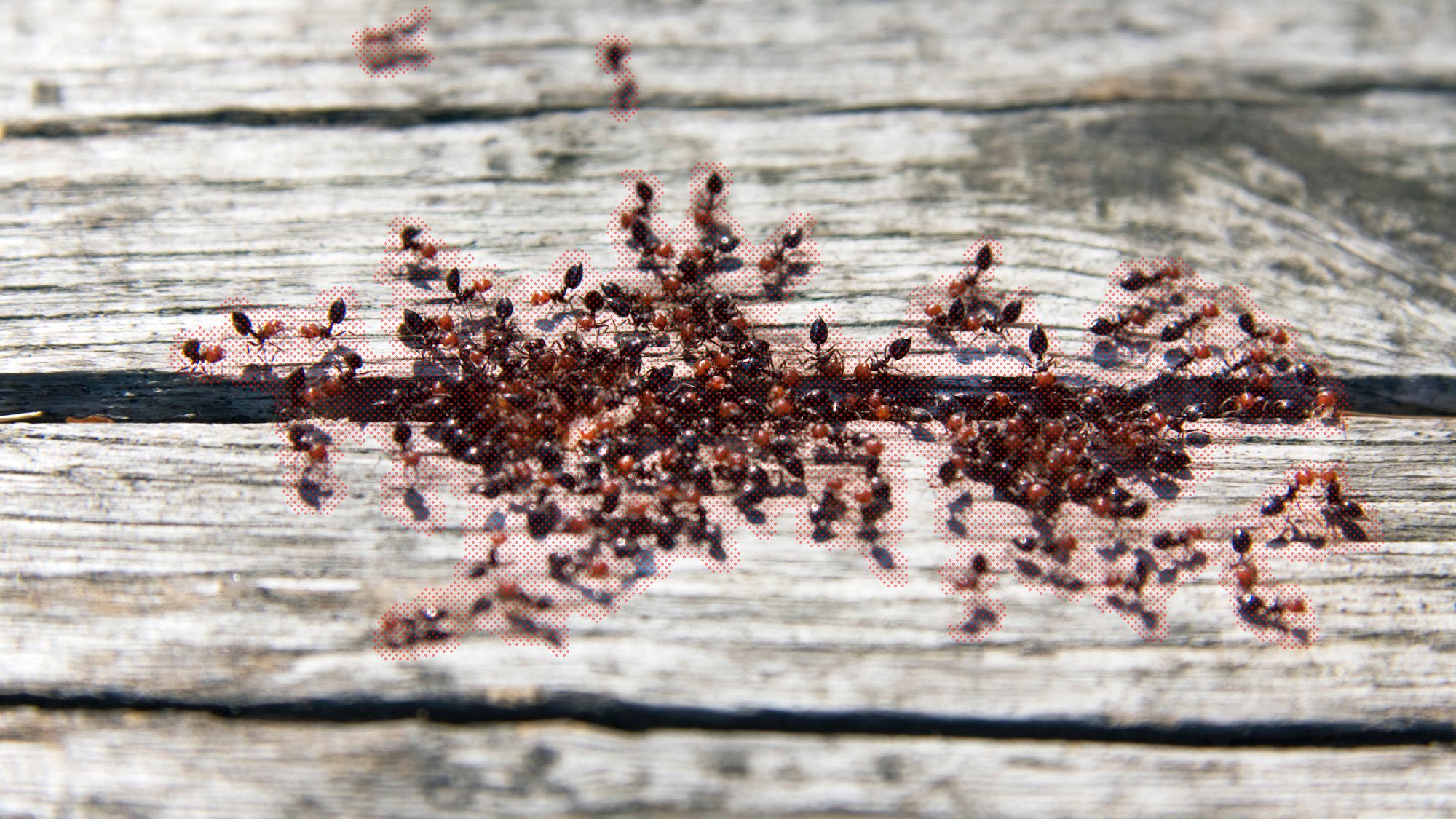
Getty Images
If you’ve been bitten by one, you know how much it hurts. Fire ants get their name from their burning sting, and even though they’re tiny, they’re vicious if they get on your property. Fire ants are most active during spring and fall, when the weather is warm and the soil heats up. With spring upon us, you’ll want to protect your family and home from these tiny red pests.
“This species causes significant agricultural loss in addition to medical and environmental harm. There are several actions you can take to protect yourself from being stung or experiencing damage on your property,” says David Price, technical director and associate certified entomologist at Mosquito Joe.
Fire ant colonies can have a single queen or a small group of queens, and can expand to thousands of red ant soldiers in just a month. To keep the troops at bay, here are a few tips from the experts.
Look for and target mounds
Targeting individual mounds in the early morning or early evening, when fire ants are foraging for food, can be a good way to get fire ants under control.
Price says fire ants often build mounds at the base of trees, beside brick walls, under patio slabs, in lawns, or next to concrete walks. They also may build mounds beside or under the foundation and electrical or utility housings.
“If you see a mound of fluffy, worked soil that has no opening in the center and is several inches above the ground, it is most likely a fire ant mound,” says Price.
To treat a mound, he recommends drenching it with several gallons of hot water, or insecticide mixed with several gallons of water. Another option is to use surface application, using dust or granular insecticide that can be applied over the top of the mound and then watered into the soil.
Another solution is to sprinkle poisoned bait around the mound. Foraging ants will then take the bait back to the colony to feed upon it. While this may be slower-acting, Price says it can be more effective than drenching or surface application “because the workers will feed the bait to the queen and brood, thus gaining effective control of the colony.”
Eliminate standing water and moisture
Fire ants are attracted to moisture and can make it into rooftops and wall voids, which means all leaks should be repaired and external faucets should be checked so that they no longer drip.
“Fire ants require water to survive and are often found near creeks, runoff ditches, streams, rivers, ponds, lakes, and other bodies of water,” says Josh Matta, senior biologist and insect expert at Spectrum Brands. “Eliminating standing water surrounding your home can be a smart preventive measure.”
Price adds that surveying the property and eliminating areas of water collection will assist in minimizing ant movement to the inside of the house, too.
Keep the garden tidy
Keep trees and shrubs trimmed and straw and mulch far from the home. Remove ripe fruit from trees, and pick up any fallen fruit.
“Fire ants can wreak havoc on a garden. This can occur throughout the year and can cause significant damage to soybean crops, citrus, corn, okra, bean, cabbage, cucumber, eggplant, potato, sweet potato, peanut, sorghum, sunflowers, and more,” says Matta.
He says a well-kept garden that is frequently tilled may get fewer fire ant mounds, because tilling disturbs the fire ants and causes them to move. He also says homeowners should turn mulch or other bedding material every couple of weeks to keep moisture retention low and discourage nest building.
Seal points of entry in exterior walls
Fire ants are very small, so it’s easy for them to get inside your home through any hole in a wall, cracks in siding, or HVAC systems. So patch holes and install door sweeps on exterior doors and garage doors.
“It is important to seal points of entry to help prevent an indoor infestation. Fire ant colonies can make their way into homes in search of food, water, and nesting sites,” says Matta.
He says they can enter through cracks and crevices, especially during extreme outdoor heat, drought, or flooding rains. He says they can make their way into utility rooms, bathrooms, or near the water heater where they have access to the area from outside.
Matta says when treating fire ants with prevention products ($4, Lowes), apply a 3-foot to 5-foot band of granules next to the house foundation for protection.
Eliminate food sources
To prevent red ants from invading your house, it’s important to eliminate all possible food sources. Red ants feed on animal and vegetable sources, which can include insects, earthworms, and spiders. Price says they will also collect honeydew and forage for sweets, proteins, and fats inside homes.
“Good housekeeping, being aware of food sources, and eliminating them on the outside of the home will reduce the chance of a colony,” he says.
The post How To Protect Your Home (and Yourself) From Fire Ants appeared first on Real Estate News & Insights | realtor.com®.
No comments:
Post a Comment